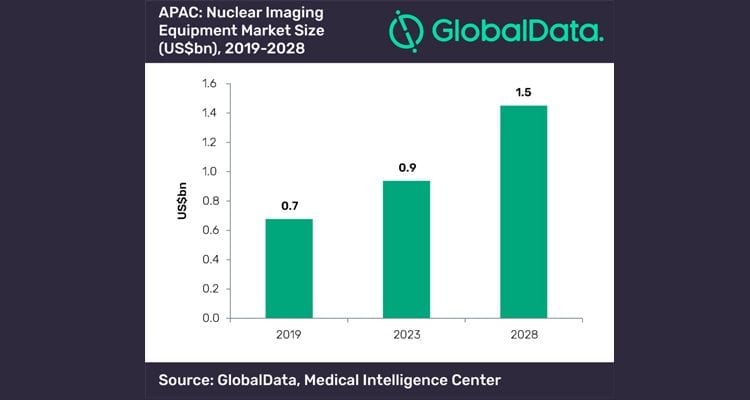Nuclear imaging equipment market in APAC to grow at CAGR of 8.9 per cent between 2019 and 2028: GlobalData
China will be by far the fastest growing country in the region, which is closely followed by the fastest growing markets, India, South Korea and Japan
The nuclear imaging equipment market in the Asia-Pacific (APAC) region is expected to grow at a compound annual growth rate (CAGR) of 8.9 per cent from $0.7 billion in 2019 to $1.5 billion by 2028, according to GlobalData, a leading data and analytics company.
China will be by far the fastest growing country in the region growing at a CAGR of 11 per cent between 2019 and 2028, which is closely followed by the fastest growing markets, India, South Korea and Japan, respectively.
The company’s report, ‘Nuclear Imaging Equipment – Diagnostic Imaging Market Analysis and Forecast Model’ states that while inclination towards non-invasive disease diagnosis will be the main market driver, the increased aging population with cardiac and neurological ailments and growing cancer patients in both younger and older population will propel the market during the forecast period.
Manasa, Medical Devices Analyst, GlobalData, comments, “GE Healthcare has remained as the market leader in APAC due to its innovation of advanced technologies by acknowledging the requirements of the patients. Regional companies like Canon Medical Systems Corp and Neusoft Medical Systems have also established themselves as competitors in this space apart from the other global manufacturers such as Siemens Healthineers and Philips Healthcare.”
In the APAC region, positron emission tomography/computed tomography (PET/CT) systems are the major revenue contributors within CT systems, with their market growing at a CAGR of 8.8 per cent between 2019 and 2028, followed by single photon emission computed tomography/computed tomography (SPECT /CT) systems.
Manasa concludes, “The technological advancements in the medical field will have a positive impact on the growth of nuclear imaging equipment market. The demand for the products required specifically for each of the vital organs will help physicians make more accurate clinical decisions enhancing patient safety, driving the market forward.”
- Advertisement -


